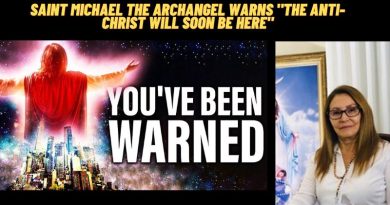Exorcist Director William Friedkin Films Real Life Exorcism: ‘It Was Terrifying”…”violent thrashing, foaming at the mouth and screaming.”
When William Friedkin shot “The Exorcist” in 1973, he had never seen an exorcism, though even at the time he believed in the power of this rite. Decades later, the U.S. director came full circle when he was able to film one close up — involving violent thrashing, foaming at the mouth and screaming — thanks to Father Gabriele Amorth, who performed exorcisms for the Vatican’s Rome Diocese. The result is documentary “The Devil and Father Amorth,” which screened at the Venice Film Festival. Friedkin spoke to Variety about the experience.
How did you and Father Amorth connect?
I was familiar with his books, four or five of which are translated into English. And I knew that he was kindly disposed towards “The Exorcist” movie, even though he had said the special effects were over the top. He felt that it helped people to understand his work. I had never tried to meet him; I never thought I could. But I was in Lucca [Italy] a year or so ago…and someone casually mentioned that Lucca was about a half-hour drive to Pisa…where there was an airport where I could catch a one-hour flight to Rome. Something clicked, and through a friend I was able to write Father Amorth. Two days later he wrote me back, and said he would meet me.
So it was your idea?
Yes. This idea just popped onto my head. I call it providential. I had an inner voice that said to me, “I wonder if I could meet Father Amorth?”
It’s a known fact that Amorth was a fan of “The Exorcist.” It’s really so wonderful that in that film you had been able to capture something that resonated for him, even without doing that much research into the specifics of what he did.
There is no research; the only research is his books. In the United States in the 20th century, there were two reported cases of possession, as far as Mr. Blatty [who wrote the novel “The Exorcist”] and I could tell. There were only two cases that had any substantial writing about them in the United States….The church doesn’t say a lot about this. They don’t try to publicize it at all. They are not promoting it. I doubt that they will even have a position about my film [this latest one]. They never comment about these things. I doubt that they would have given me permission to do what I did. He gave me permission, and he operated quite independently from church procedure and was openly critical of the Vatican.
The amazing thing is that you were able to get access to a real exorcism so easily.
I was shocked. I had no idea that I would ever be able to even meet with him. I did know how busy he was. He was doing exorcisms all day every day right up until he went into the hospital and then died [in September 2016].
Why do you think you got the access?
I think I came along at a time when he wanted people to become aware of this work because he wanted the Vatican to train more exorcists. He believed that I had enough cachet to take his story…that I would be able to bring it to the public by way of a film.
Tell me about the shoot.
I had to shoot it alone, obviously. The conditions were that I come along with no crew and no lights. So I used a Sony still camera that shot high-definition video. I had only that camera running and I was about two feet away from them, probably even closer.
What was the experience of witnessing a real exorcism so close up like?
It was terrifying. I went from being afraid of what could happen to feeling a great deal of empathy with this woman’s pain and suffering, which is obvious in the film.
As I understand it, Amorth had been doing exorcisms on her for some time.
The one that I filmed was her ninth, and she was having one a month.
You have subsequently consulted with scientists in the U.S. about what you witnessed and filmed. What did they say?
I consulted with neurologists, brain surgeons, some of the best in the United States. The brain surgeons had no idea what her affliction was and none of them would recommend an operation. They believe that everything originates in the brain but — and they say this in the film — they have never seen anything quite like these symptoms….Then the psychiatrists…all described how psychiatry now recognizes demonic possession. It’s called dissociative identity disorder/demonic possession. And if a patient comes in and says they are possessed by a demon or a devil, they don’t tell them that they are not….They do whatever psychiatric treatment they think is necessary, including medication. And they bring an exorcist in.





